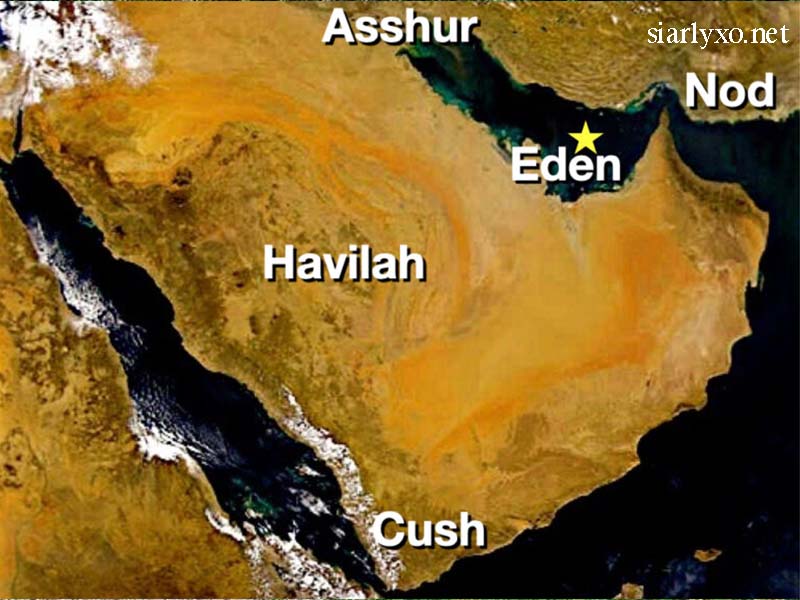The Garden of Eden, a biblical paradise described in the Book of Genesis, has intrigued scholars, theologians, and explorers for centuries. Its lush landscapes, flowing rivers, and significant symbolism make it a focal point of many religious teachings and mythologies. This article delves into the various theories and historical context regarding where the Garden of Eden was located, examining geographical clues from ancient texts and modern interpretations.
The Significance of the Garden of Eden Located
Before exploring the location of the Garden of Eden, it’s essential to understand its significance. In the Genesis narrative, the Garden serves as the idyllic home for the first humans, Adam and Eve. It is depicted as a place of abundance, where trees bear fruit, and rivers flow freely. The Garden symbolizes humanity’s original state of innocence and connection with God, making its location a topic of profound interest.
Biblical Descriptions of the Garden of Eden
According to Genesis 2:8-14, the Garden of Eden was planted by God in the east and was described as a paradise with diverse flora and fauna. The passage details four rivers that flowed out of Eden, named the Pishon, Gihon, Tigris, and Euphrates. The existence of these rivers has led many researchers to search for Eden’s location based on their modern counterparts.
Geographical Theories
Various theories have emerged regarding the location of the Garden of Eden. Scholars and archaeologists have proposed several sites, each backed by historical, geographical, and cultural arguments. Below are some of the most prominent theories.
1. Mesopotamia: The Most Popular Theory
One of the most widely accepted theories places the Garden of Eden in Mesopotamia, specifically between the Tigris and Euphrates rivers, in modern-day Iraq. This region is often referred to as the “Cradle of Civilization” and is rich in archaeological findings. The argument for Mesopotamia stems from the geographical descriptions in Genesis, where the Tigris and Euphrates are mentioned directly.
Supporting Evidence
- Historical Context: Mesopotamia was known for its fertile land and advanced agricultural practices, aligning with the biblical depiction of Eden as a land of abundance.
- Archaeological Findings: Numerous ancient civilizations, such as the Sumerians, Akkadians, and Babylonians, thrived in this area, suggesting that it was a significant center of human development.
2. The Armenian Highlands
Another theory suggests that the Garden of Eden was located in the Armenian Highlands, an area that includes parts of modern-day Turkey, Armenia, and Iran. Proponents of this theory point to the historical presence of the rivers mentioned in Genesis.
Supporting Evidence
- Rivers Mentioned in Genesis: The Pishon and Gihon rivers are thought to have connections to rivers in the Armenian region.
- Cultural Significance: The Armenian Highlands are considered a cradle of early civilizations, which aligns with the biblical narrative.
3. The Persian Gulf
Some scholars have proposed that the Garden of Eden may have been submerged beneath the waters of the Persian Gulf. This theory is based on the idea that ancient land configurations were different, and the fertile land described in Genesis was once above sea level.
Supporting Evidence
- Geological Studies: Research has shown that the Persian Gulf was once a dry area, potentially home to lush landscapes before the last Ice Age.
- Submerged Ruins: Some believe that the discovery of ancient structures underwater could provide clues to Eden’s true location.
4. Other Proposed Locations
Several other locations have been suggested, each with its own rationale:
- Egypt: Some theories posit that the Garden of Eden could have been located near the Nile River due to its significance in ancient cultures and its fertile lands.
- Saudi Arabia: The region around Mecca has been considered, particularly because of the historic rivers and agricultural lands.
- Ethiopia: The mention of the Gihon River has led some to associate the Garden with the areas surrounding the Nile and the Ethiopian Highlands.
Theological Interpretations
Beyond the geographical theories, the location of the Garden of Eden also holds theological significance. Various interpretations arise from different religious traditions:
- Judaism: In Jewish tradition, the Garden is often viewed as a spiritual place where humanity lived in harmony with God. Its location emphasizes the idea of divine presence in the world.
- Christianity: For Christians, the Garden represents both the beginning of humanity and the loss of innocence. Its precise location may be less important than the moral and spiritual lessons derived from the Eden narrative.
- Islam: In Islamic tradition, the Garden is also acknowledged as a paradise from which Adam and Eve were expelled. The Qur’an provides various details that have led scholars to different interpretations of its location.
Symbolism of the Garden of Eden
Regardless of its actual location, the Garden of Eden carries profound symbolism. It represents:
- Innocence and Purity: The Garden is a place free from sin and suffering, reflecting humanity’s original state.
- Connection with Nature: It emphasizes the relationship between humans and the natural world, advocating for stewardship and harmony with creation.
- Divine Provision: The Garden illustrates God’s provision for humanity, showcasing an environment rich in resources.
Modern Searches for Eden
Over the years, explorers, archaeologists, and researchers have embarked on quests to find the elusive Garden of Eden. Expeditions have uncovered numerous ancient sites in Mesopotamia and surrounding regions, yet the exact location remains a mystery.
Archaeological Discoveries
Many archaeological findings, such as ancient artifacts, irrigation systems, and city ruins, have provided insight into early human civilization. However, none have conclusively identified the Garden of Eden. Discoveries in the region continue to intrigue researchers, prompting further exploration.
Technological Advancements
With advancements in technology, including satellite imagery and geological surveys, the search for the Garden of Eden has entered a new era. Scientists can now analyze land formations and water sources that may provide additional clues to its location. These technologies offer hope that the mystery of Eden may one day be unraveled.
Conclusion
The question of where the Garden of Eden was located continues to captivate scholars and enthusiasts alike. From the fertile plains of Mesopotamia to the highlands of Armenia and beyond, numerous theories have emerged, each rich with historical and cultural significance. While the exact location may remain uncertain, the Garden of Eden endures as a symbol of innocence, divine provision, and humanity’s relationship with nature.
In exploring the Garden’s potential locations, we gain not only insights into ancient geography but also a deeper understanding of our spiritual heritage. The search for Eden serves as a reminder of humanity’s quest for paradise and the timeless narratives that shape our beliefs and values. As we delve into the mysteries of the past, the allure of the Garden of Eden continues to inspire exploration and reflection, inviting us to consider what it truly means to live in harmony with the world around us.




